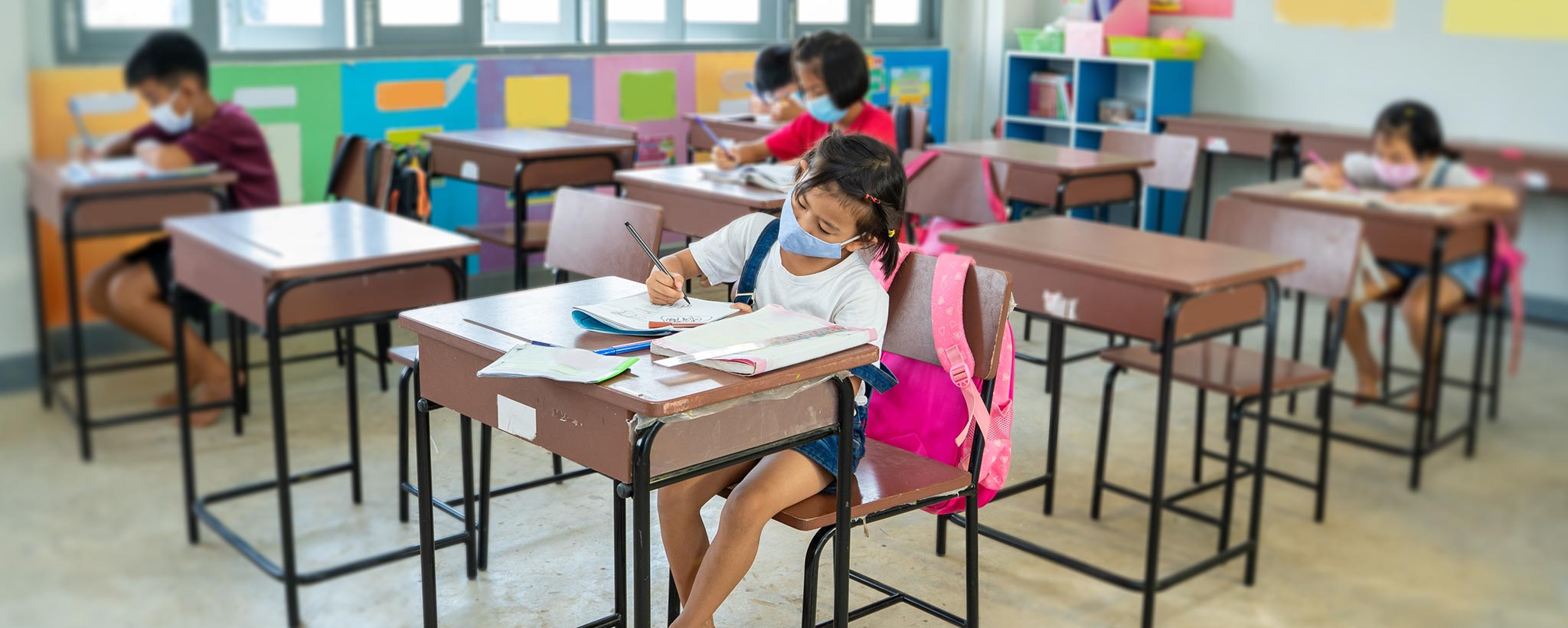Telltale signs of vision problems are squinting, headaches, lack of concentration, or reading comprehension.
Through a Child’s Eyes
What are some practical things you can do for children’s eye safety? One thing is to schedule an eye exam for your child. We normally think of vision declining in adulthood. However, congenital conditions can develop much earlier. This impairs learning and may be a reason for low grades. Your child’s eye doctor can help detect refractive errors such as nearsightedness, farsightedness, and astigmatism as well as the following diseases:
- Amblyopia (lazy eye)
- Strabismus (crossed eyes)
- Ptosis (drooping of the eyelid)
- Color deficiency (color blindness)
Telltale signs of vision problems are squinting, headaches, lack of concentration, or reading comprehension. Remote learning involves more screen time. Staring at the light they emit may require eyeglasses with special filters to reduce eye strain.
Eye care professionals—optometrists or ophthalmologists—can display eye charts that display eye anatomy and physiology. Disorders of the Eye illustrates glaucoma, melanoma, diabetic retinopathy, macular degeneration, blepharitis, conjunctivitis, exotropia and esotropia (strabismus). View available posters, including one for pediatrics, within the Vision collection.
To support the writing of useful articles about vision, ClinicalPosters sells human anatomy charts, scientific posters, and other products online. You may sponsor specific articles, become a ClinicalNovellas Member, or remit a small donation.
ClinicalPosters sells human anatomy charts, scientific posters, and other products online to offset expense of the writing useful articles about vision. Slide extra posters into DeuPair Frames without removing from the wall.
Show your support by donating, shopping for ClinicalPins, becoming a ClinicalNovellas Member, or leaving an encouraging comment to keep the research going.
To support the writing of useful articles about vision, ClinicalPosters sells human anatomy charts, scientific posters, and other products online. You may sponsor specific articles or remit a small donation.
ClinicalPosters sells human anatomy charts, scientific posters, and other products online to offset expense of the writing useful articles about vision. Slide extra posters into DeuPair Frames without removing from the wall.
ClinicalPosters sells human anatomy charts, scientific posters, and other products online. You may remit a small donation or become a ClinicalNovellas Member.
You can support the writing of useful articles about vision by sponsoring specific articles, becoming a ClinicalNovellas Member, or remitting a small donation.







